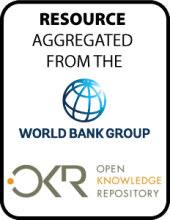Land Library
Welcome to the Land Portal Library. Explore our vast collection of open-access resources (over 74,000) including reports, journal articles, research papers, peer-reviewed publications, legal documents, videos and much more.
/ library resources
Showing items 1 through 9 of 68.The agricultural and food production sector plays a key role in fighting poverty and food insecurity in Moldova, but is facing critical challenges to modernize and integrate into the international market.
The rural economy in Bangladesh has been
a powerful source of economic growth and has substantially
reduced poverty, especially since 2000, but the remarkable
transformation and unprecedented dynamism in rural
This paper provides new empirical
insights on the joint distribution of consumption, income,
and wealth in three of the poorest countries in the world —
Malawi, Tanzania, and Uganda — all located in Sub-Saharan
While scholars agree on the importance
of land rental markets for structural transformation in
rural areas, evidence on the extent and nature of their
operation, including potential obstacles to their improved
According to Myint's "vent-for-surplus"
theory, development of the economies of Indonesia, the
Philippines, and Thailand from the nineteenth century on
depended on the natural advantage of large tracts of unused
Why produce a policy note on
horticulture in Uzbekistan? There are several answers to
this existential question, although they are not necessarily
obvious ones. Agriculture, taken as a whole, constitutes a
Himachal Pradesh has the reputation of
being stable, inclusive, cohesive and well-governed and it
stands apart in many respects from its neighbors in northern
India. It has additionally, achieved remarkable growth,
This paper uses farm panel data from
China to examine the dynamics of land transactions, machine
investments, and the demand for machine services. Recently,
China's agriculture has experienced a large expansion
The poor in Bangladesh are more likely
to belong to households with a larger number of dependents
and lower education among household members, be engaged in
daily wage labor, own little land, and be less likely to


